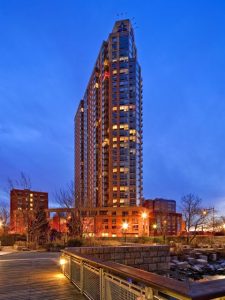Meilleurs quartiers de New York pour acheter un appartement
From experience, if the property does not meet at least two of the above criteria, don’t move forward. This is the minimum required to enjoy your home and make your life in New York enjoyable.
If you read these lines, you have certainly understood for a long time that real estate in New York is expensive, very expensive. But it’s not necessary to be named Donald Trump to know that this does not prevent to do good business by investing. The key is to have a clear idea of your project and your goals. Once this is done, New York has dozens of neighborhoods that can allow everyone to realize his dream real estate.
Here are some tracks, chosen according to your purpose:

Buy to Rent
Let’s start with the bad news: for a “pure” rental investment, Columbus (Ohio) or Jacksonville (Florida) will give you more for your money than New York … In the Big Apple, count on a return rental of 1 to 3% per year. The good news is that this shortfall will generally be more than offset by the potential gain on resale (see below).
Whatever the price range and the neighborhood, the difference will be played on the occupancy rate of your property: the more you will find time to find a tenant between two leases, the more the yield will decrease. We will therefore favor apartments that can be rented the fastest: those near the metro and those located in “good” school districts.
In this respect, and contrary to a purchase in which only the surplus value would count, one will prefer to move towards the sure values, the settled districts, where the value of hiring is known and stable. Manhattan, especially Midtown East, Tribeca, Soho, or the Upper East Side; here stand the high ground.
Finally, have in mind the very New York distinction between “co-ops” and “condos”: the first are very special co-properties, where the council of co-owners has a say on almost everything, and where very often the hiring is purely and simply prohibited. We will avoid neighborhoods where co-ops are most numerous (Upper West Side for example or the most posh places on the Upper East Side), for the benefit of condos (which they operate as co-French properties) .

Buy to Live
Even if you will probably not live in your new nest during the 30 years of the loan you are going to contract, you will spend a significant number of years there. Here your lifestyle should take precedence over any consideration of resale at 5 or 10 years. Here, for fun, a small guide to neighborhoods compared to a Parisian equivalent. The exercise is not scientific, but it can help:
- If you are 16th arrondissement: the edge of Central Park, Upper East Side and Upper West Side, to the south (which includes what is now called Billionaire Row).
- If you are 15th: the Upper East Side, from Park Avenue to the East River.
- If you are Marais or Bastille: Greenwich, Meatpacking, for the mix of small quiet streets and intense commercial animation.
- If you are XIth district: Williamsburg in Brooklyn obviously: for its hip side, its many themed bars and gastronomy.
- If you are 17th district: BoCoCa (Boerum Hill, Cobble Hill, Carroll Gardens) in Brooklyn.
Of course, the priorities for an apartment are even more important. But to avoid excessive excitement, consider the list of what really makes the difference:
- View of an iconic monument
- Prestigious address
- High floor
- Proximity to 2 subway lines (less than four blocks)
- Apartment and building amenities (doorman, gym, quality of appliances, etc.).
From experience, if the property does not meet at least two of the above criteria, don’t move forward. This is the minimum required to enjoy your home and make your life in New York enjoyable.

Prioritize Added Value
Despite the very sharp rise in prices in recent years, Brooklyn still offers great prospects of financial tumble … But to find the best deals we will probably look outside the “triangle d ‘gold’ from Brooklyn (from Carroll Gardens in the south to Greenpoint in the north and Bed Stuy in the east).
The “gentrification” transforms New York neighborhoods much faster than Paris for example. Making the best investment is therefore to find the neighborhood that is just starting to change, but will be radically different – and much more expensive – in 5 or 10 years. If you feel the pioneering spirit, move away from the Williamsburg and other neighborhoods of Brooklyn to choose, for example, East New York (Brooklyn) or Rego Park (Queens) (read here). Of course, the further you get from established neighborhoods, the greater the risk that change will ever come. But greater will be the surplus value in case of successful bet.
Another way to achieve great value, and less risky, is to choose the renovation. In New York, the difference in price between a property ready to live and a property requiring renovation is often greater than elsewhere. It’s not a coincidence: renovating here is not always easy. The regulations are rigorous (you will need a lot of licenses), skills not always abundant. But if you are well accompanied, find the right “general contractor” and a competent architect, the tumble can be considerable.